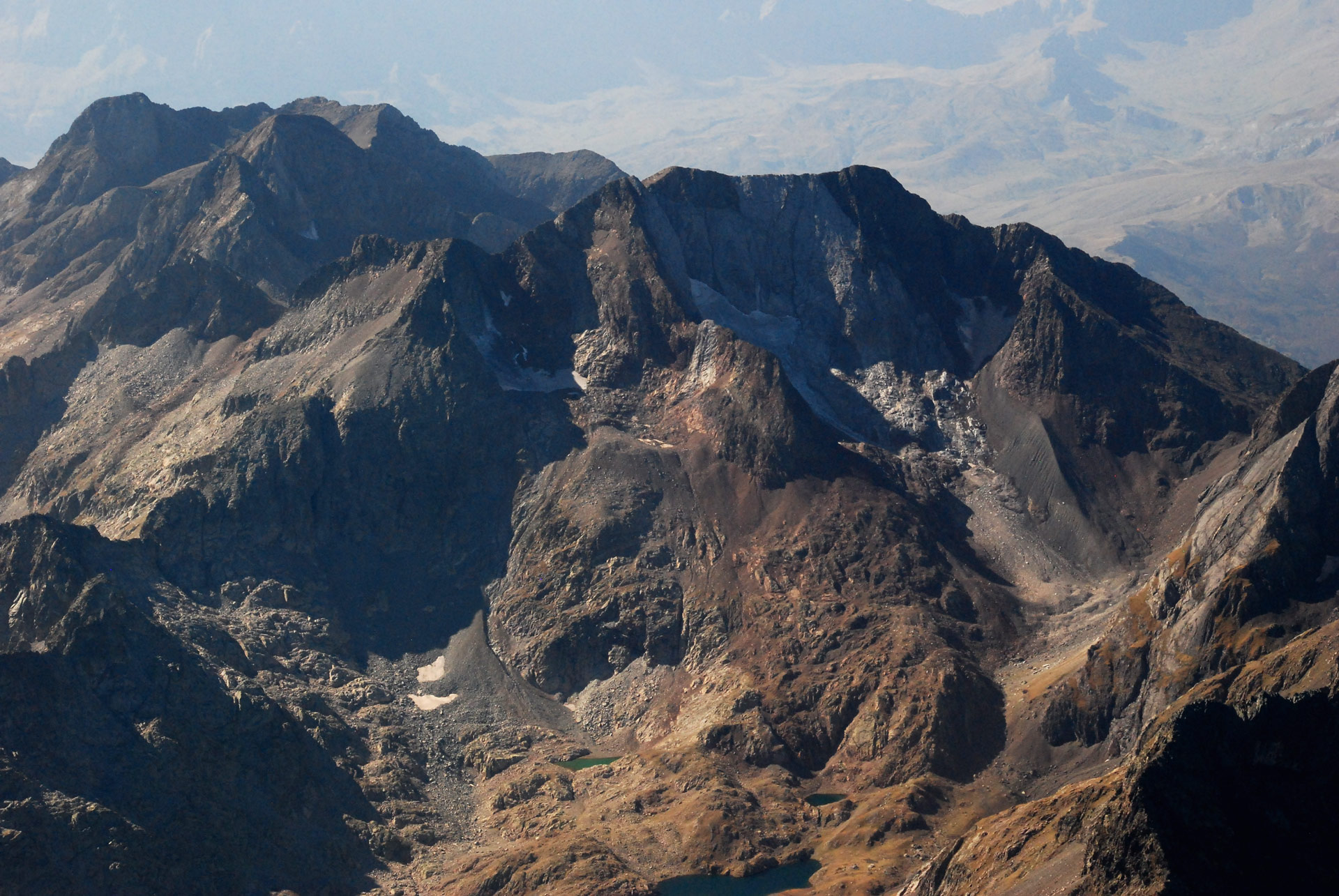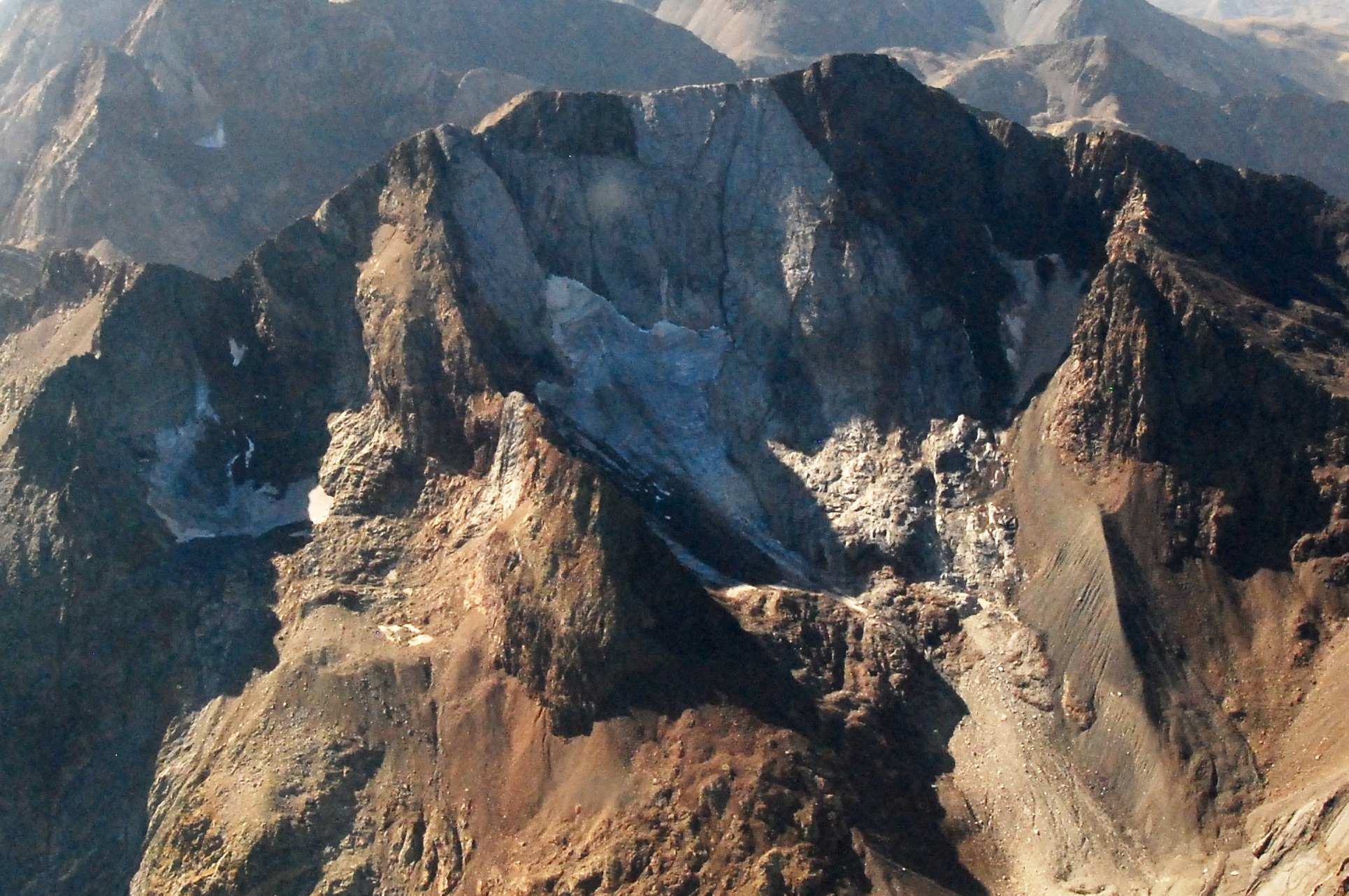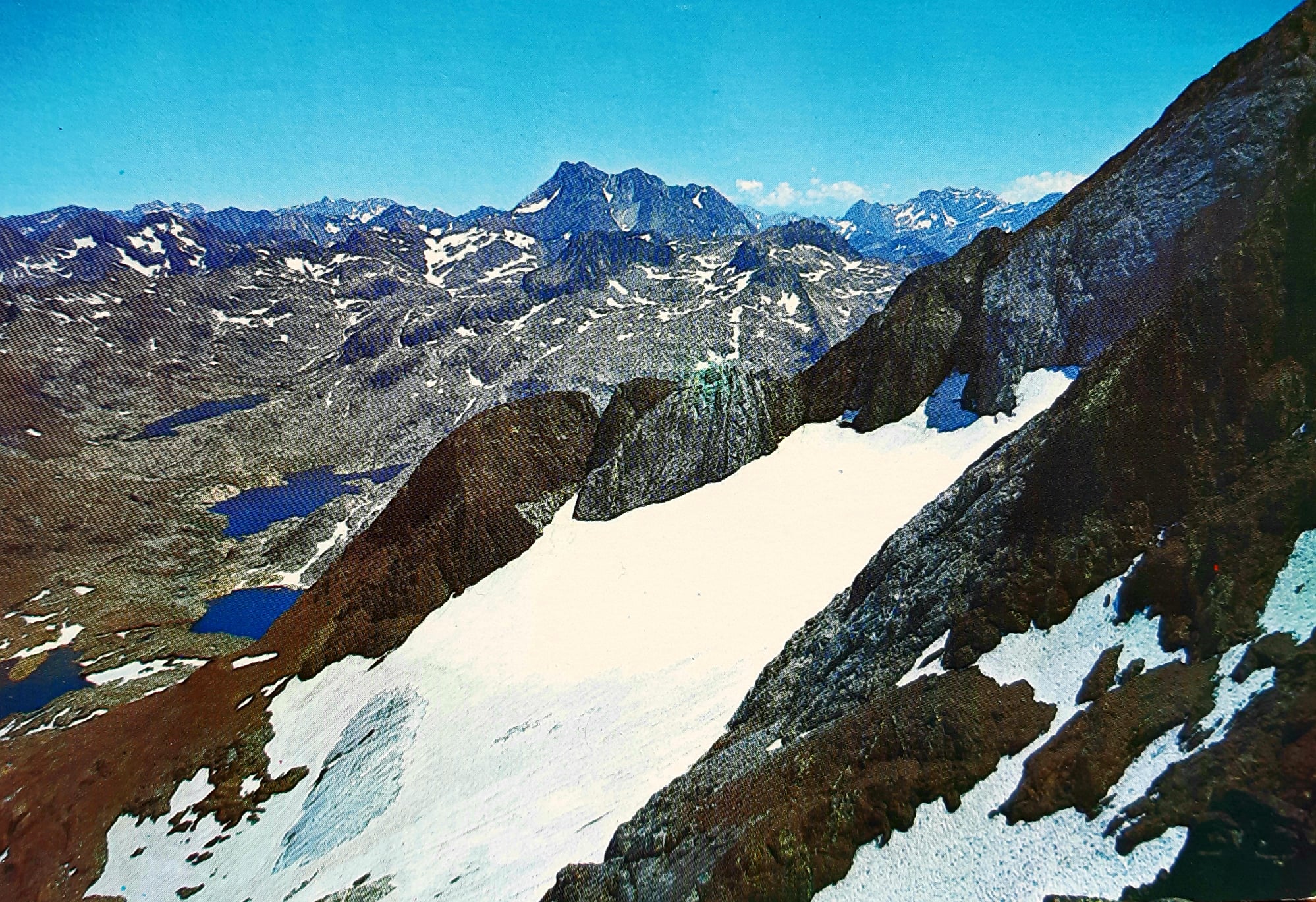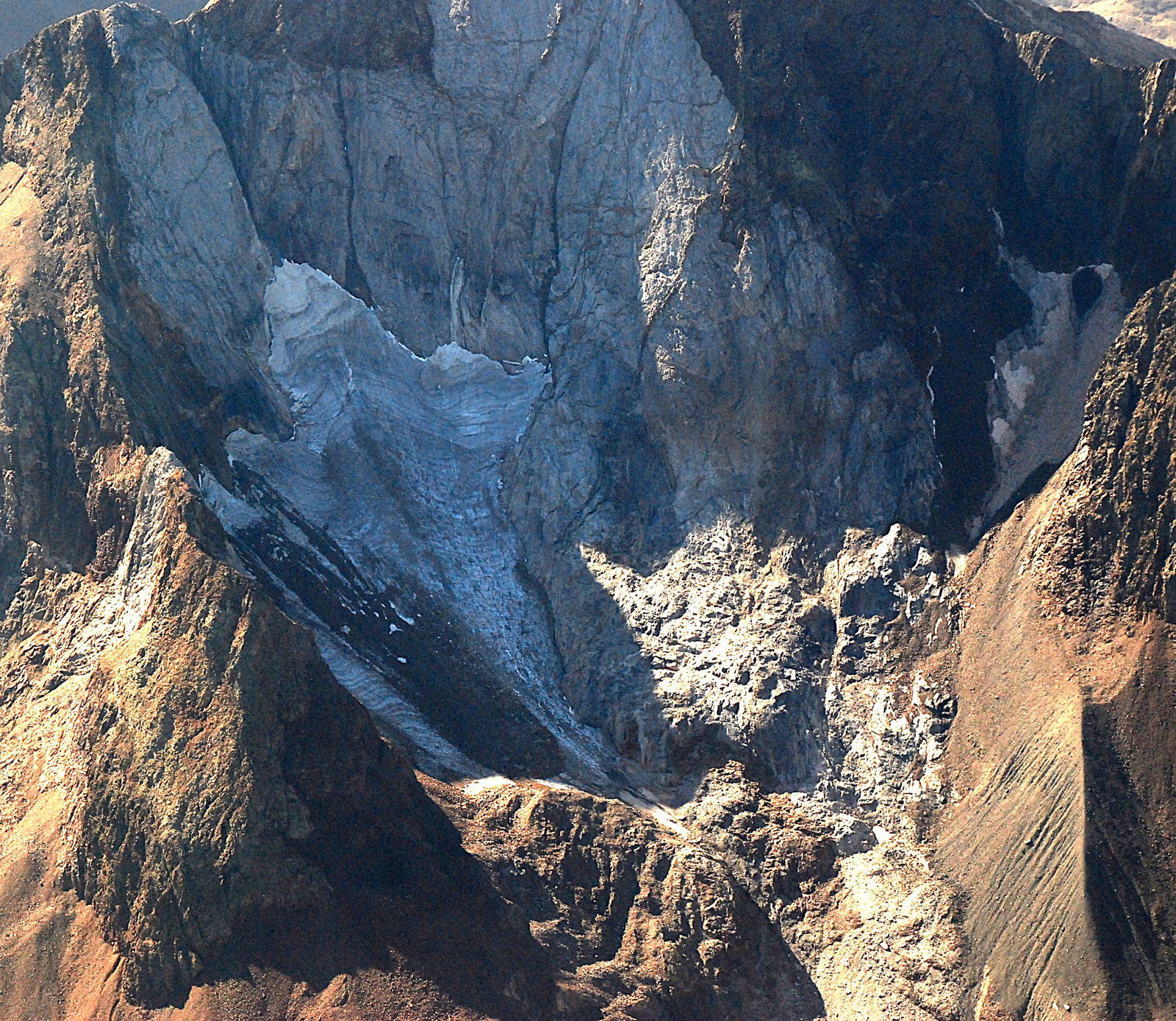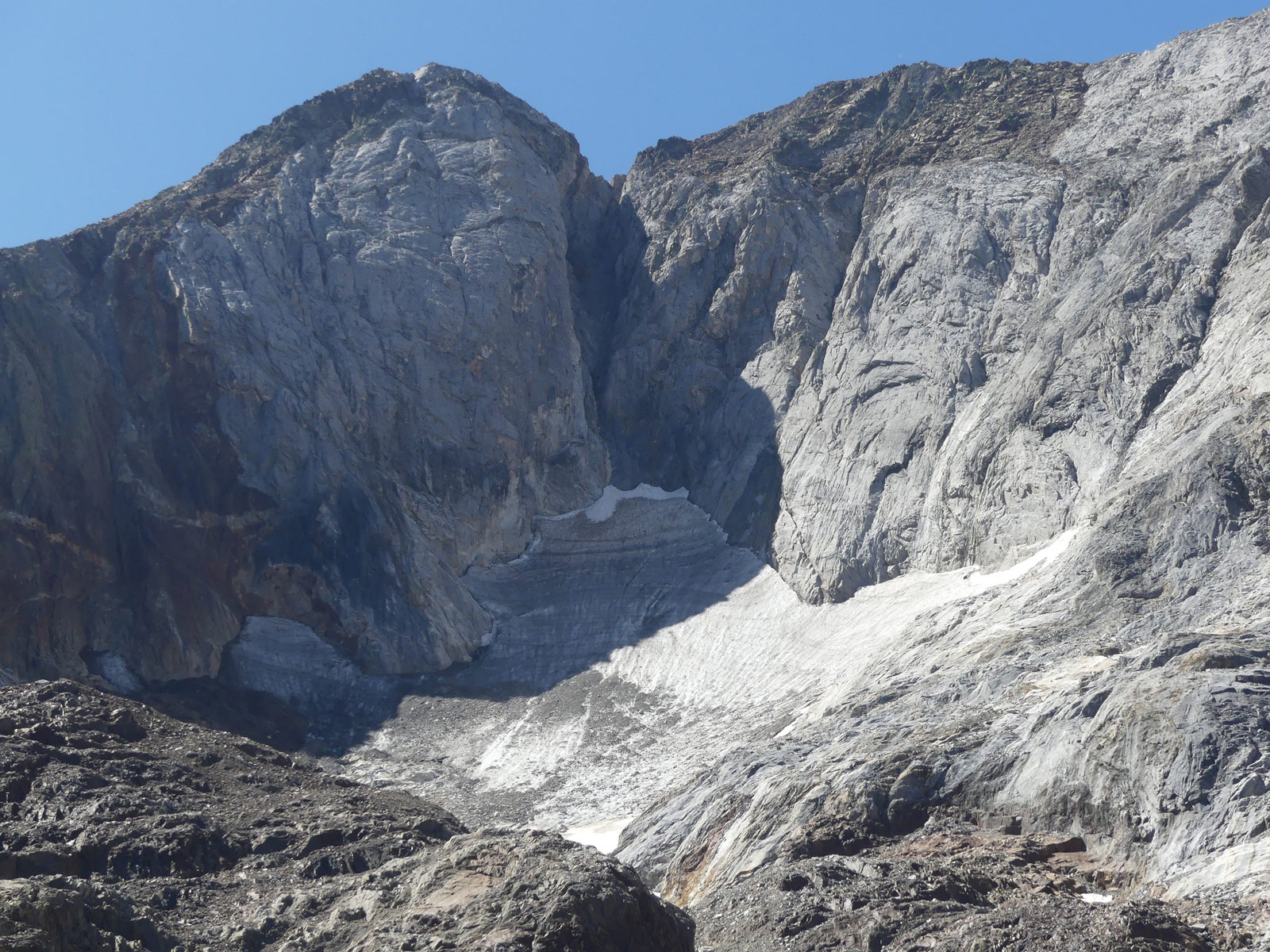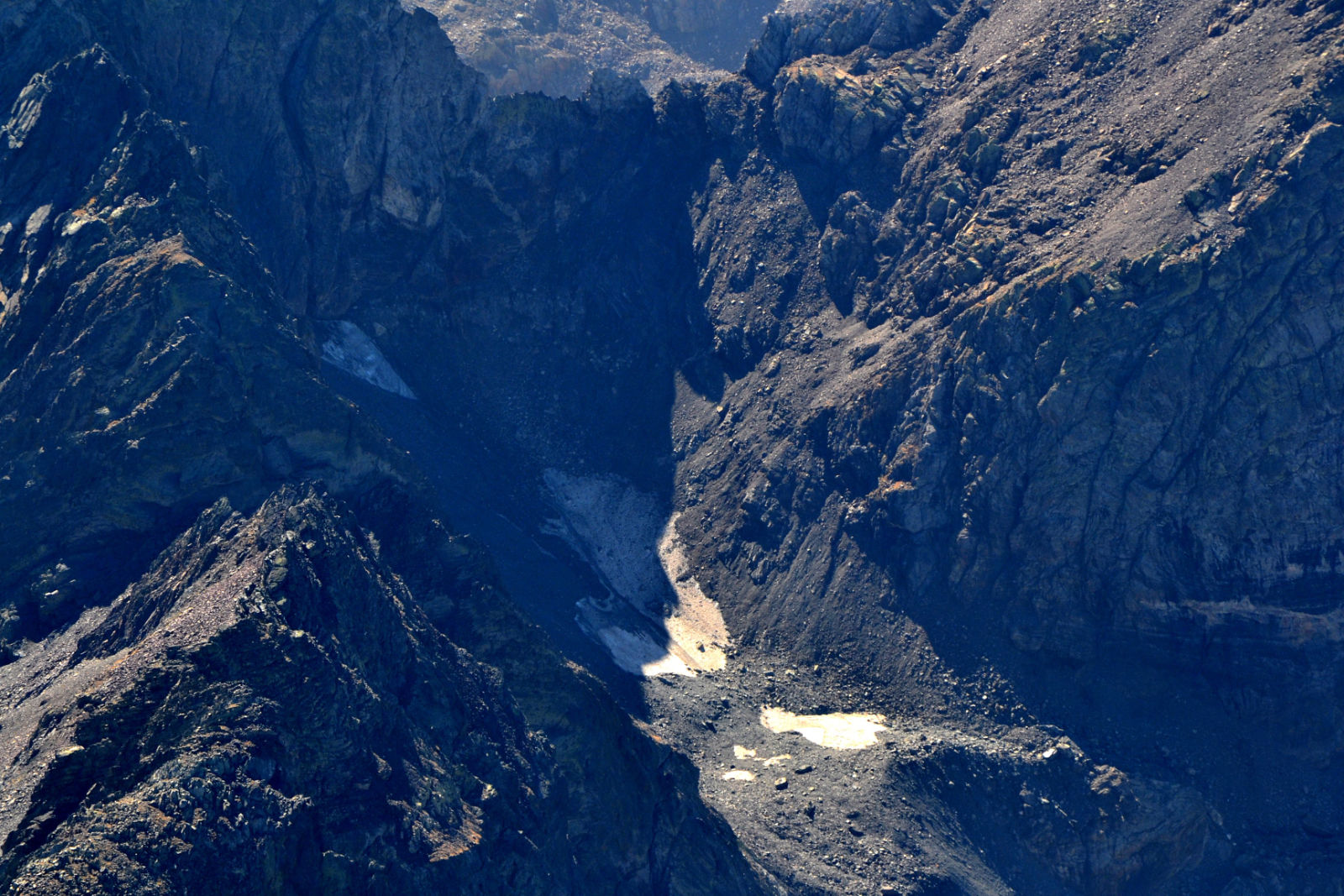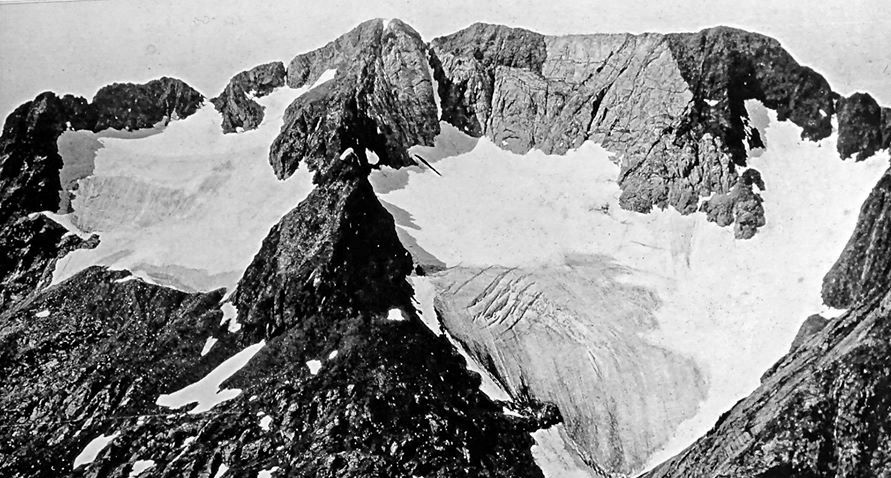During the Little Ice Age, the Central and Western glaciers of Infiernos formed a single glacier covering an area of 32.4 hectares, the largest in the massif and the 21st largest in the Pyrenees. Its tongue, measuring 1,060 metres, was one of twenty in the mountain range to exceed one kilometre in length.
During the first third of the 20th century, the two glaciers separated into two independent glaciers. The Central Glacier of Infiernos is the only glacier in the massif that remains today. Over the last twenty-five years, its retreat and loss of area have been very evident. In 2016, a major rockfall added to the erosion material covering the glacier and contributed decisively to a third of its area being buried under the debris. In the last decade, only a tiny fraction of its upper limit has retained a layer of snow throughout the annual cycle, which is insufficient to keep the glacier in equilibrium.It is currently the westernmost glacier on the Aragonese side of the Pyrenees, although its activity is very weak and it tends towards the morphology of a helero. As indicated above, the western part of Infiernos was separated from the Central Glacier a century ago. In the 1982-1985 inventory, and specifically in the 1983 observations, it was already a small, very cornered helero under the summit of Garmo Blanco (2,969 m), the name by which the helero was also known.In the 1990s, its deterioration accelerated, becoming a residual feature in 2006 and disappearing altogether in the unfavourable year of 2012. At the end of the summer season, a snowfield often occupies the space of the former ice field. The left-hand moraine of the Central and Occidental de Infiernos glaciers during the Little Ice Age is often well preserved, showing the thickness and magnitude of the former glacier.
Este aparato glaciar pertenece al siguiente macizo:
86) Central de Infiernos y 87) Occidental de Infiernos
Comparativa de imágenes

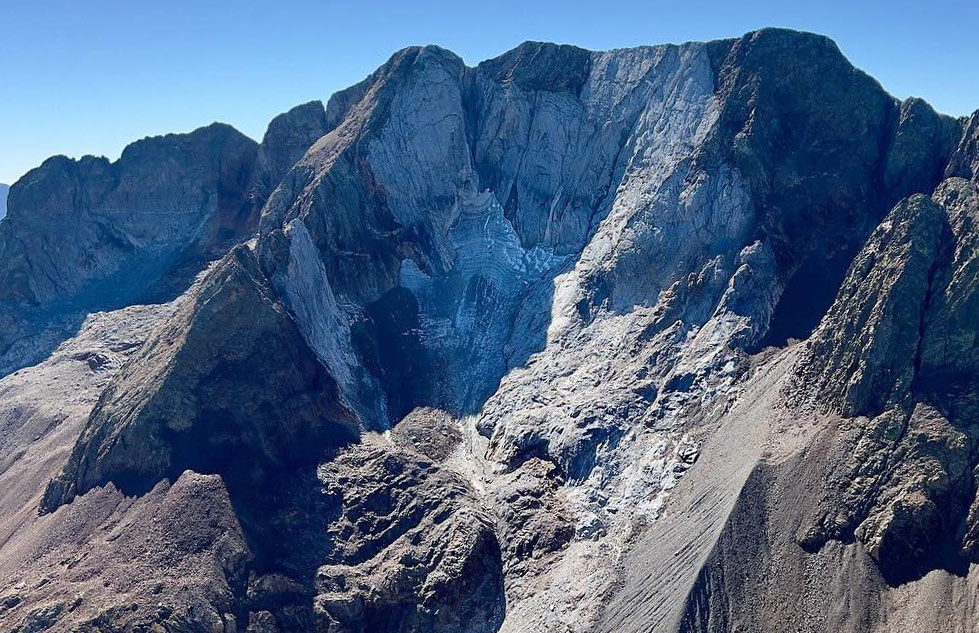
Comparativa de dos décadas, 2004 a 2023.
En 2004 el Glaciar Central de Infiernos. A la derecha el Helero Occidental cubierto de nieve. A la izquierda el Helero Oriental. (José Luis Piedrafita).
En otoño del año 2023, la nieve no ha sobrevivido ni en la cabecera del Glaciar Central ni en la ubicación del extinguido Occidental de Infiernos. Visibles las morrenas marginales izquierda y derecha de la Pequeña Edad de Hielo. (Matthieu Barokas).

